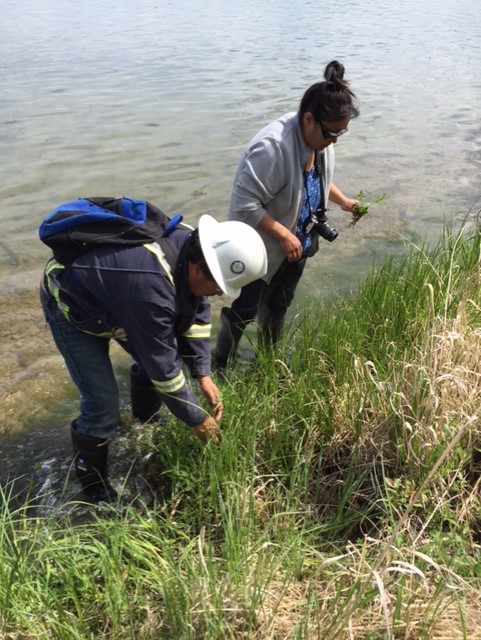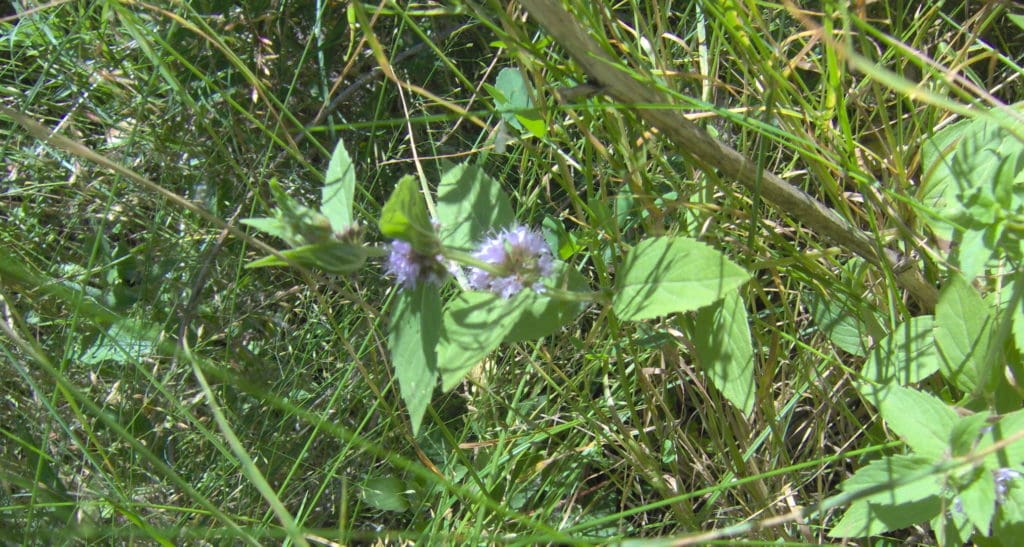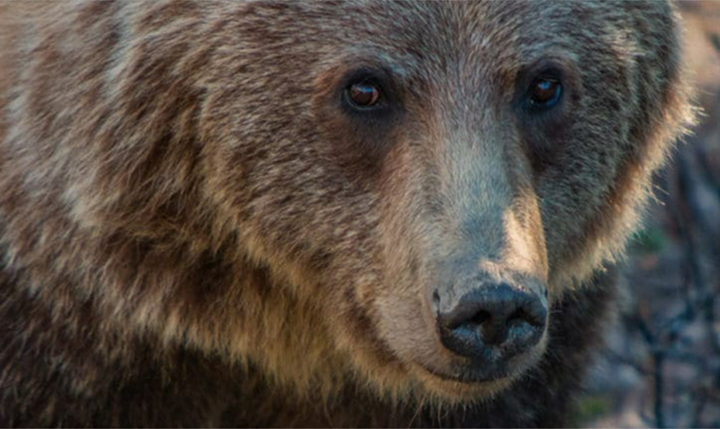Aside from time fishing and blueberry picking when I was a kid, I cannot recall any other time in my life where I went foraging in the forest to find food.
In fact, my idea of hunting and gathering included two-for-one coupons and a rewards card from my local grocery store. I do recall a particularly rigorous Easter egg hunt on the front lawn of my elementary school that resulted in an all-out turf war between the sixth and seventh graders.
Little Johnny Miller literally put all his chocolate eggs in one basket, causing the plastic handle to break, sending a cascade of goodies down the lawn. It was an absolute blood bath and poor Johnny (Johnny’s name has been changed to protect the anonymity of the Easter egg-less Miller family), spent the rest of the afternoon in chocolate shame and became the subject of taunts for many recesses to come.
Like many kids that day, I benefited from what became known in our circles as the “The Reaping.” Since then, have become accustomed to the reality that most of my food is readily available for me to pick up whenever I want it.
So, when I was invited to go herb picking out on a Cree friend’s trap line in Treaty 8 territory, I was immediately struck by my lack of knowledge about, well, everything.
How will we get there? How will we know what to forage? How many bears will there be? What do I wear?
On this occasion my friend and I are joined by our guide, who assures me that we will be safe from wildlife. He had some protective gear to keep anything big away.
Stifling the urge to ask what constitutes “something big,” I turned my attention to the important stuff — aesthetic. What does a young woman of urban refinement wear to forage in the woods?
My Instagram followers will love this, I thought to myself as I held up black leggings and a flowered romper. (#WomanOfTheWoods #GatherGlamour) I’ve since learned it is important to wear appropriate clothing to spend time in Alberta’s boreal forest. I cringe thinking of the time when I wore shorts to trek through brambles and brush. I spent that evening dabbing antiseptic on my cuts and pulling burrs from my sandals.
The landscape that I was headed to was beautiful. I was familiar with it since I had already spent the summer living in a nearby community in northern Alberta: the Kee Tas Kee Now Tribal district, part of Treaty 8 territory.
During this time, many wonderful afternoons were spent out on the land, learning about the wildlife, the plants, and accepting invitations to participate in activities that community members like to do. I was in the area to conduct research on oil and gas extraction — particularly how resource extraction impacted the lives of Indigenous communities there.
Wearing boots, jeans, and a flannel overshirt, I sit shotgun in the front seat of my friend’s truck. The windows are down, and the sun shines bright on my face. Fittingly, John Denver’s Country Roads plays on the radio. This is shaping up to be a good day.

We arrive at a gathering place of sorts, the spot trucks park to unload their all-terrain vehicles as the forest becomes thick, making driving impossible. We do the same. Soon, we are off, riding our quads through the trees.
We stop for a bit. Raising my eyes, I see the vast stretch of boreal forest. Further out, the trees end abruptly by a thin road. Next, I see fields and meadows watered by the lakes beyond. The air is hazy in the summer heat and from this height, I am almost level with the whips of clouds that drift aimlessly across the sky.
Entering back into the forest, we arrive at another meeting place of sorts and our guide tells us that the rest of the way will be on foot.
“When I was a kid, we used to bring teams of horses in the summer and my dad will still run this area with sled dogs in the winter,” my friend says to me.
I have been horse riding before, and I try to picture what it would be like to ride here. I imagine sitting high in the trees, ducking beneath branches, and listening to the dull thuds of hooves underneath me.
Instead, we dismount our mechanical steeds and swing our backpacks up onto our shoulders and set out.
Sunlight streams down on us and we can hear the birds chirping, the twigs breaking underneath us as we walk along, and the deafening buzz of insects swirling through the air.
Moving through the forest in this way is a unique experience and I am filled with a sense of wonder.
Few people get to feel the vastness of seemingly unending forest surrounding you. The trees tower over me and I lean my head all the way back to see the sky through the canopy.
At first glance, I see a sea of green before me. The green is dynamic: emerald, olive, sage, lime, beryl, celadon, and viridian. So many shades of light and dark that I swear I see the trees moving in the gleam of the morning sun.
A quick movement to the right catches my eye. A squirrel scurries across a fallen branch. Further into the trees, I see a marten poke its head up over a log to watch us.
At first glance, I see a sea of green before me. The green is dynamic: emerald, olive, sage, lime, beryl, celadon, and viridian.
In the serenity of the landscape, I am most surprised to feel the ground beneath me sag as I step over branches. I turn to my friend with a quizzical look.
“This is muskeg. It’s a special kind of ground that is part dirt, part plant, part water. Watch your step,” she says.
I hear the ground let out a lazy sigh under the weight of my step. It’s delightful. As we move through the forest, my friends tell me about the area.
“There are thousands of species here. So many different medicines too — look,” my friend says as she points to a pretty yellow flower sprouting up out of some rocks. “Cook this for a long time, overnight, and it gets sweet for eating.”
I nod in agreement.
“What’s Cree for flower?” she asks. She often quizzes me on my Cree language skills, and we have a good time laughing at my pronunciation.
“Ummm, wâpikwanewa — flower,” I respond.

“Tâpwê, îhî.” she responds approvingly. “It’s balsamroot. And remember, the leaves look like arrowheads.”
Suddenly, our guide calls to us.
“It’s just up here!”
I look up and see a lake about 20 feet away. The three of us sit down at the edge of the water and take a moment to rest and take in the beautiful view.
Gentle blue and green waters lay out before us. Here, the water is quite shallow and I can see the brownish sand and lake pebbles, like Easter eggs, resting just under the surface.
I set my feet into the shallows to cool off. We had been hiking for less than an hour but the heat, even in the trees, is heavy.
“This is the best way to cool down out here,” says my friend as she steps into the water with her pants rolled up to the knee. “Come, this is what we want right here.”
She gestures for me to wade over to her and points into the reeds. I can’t quite tell what I am looking at; it all seems like weeds.
“See, this one, it’s kind of fuzzy like? Smell it, what does it smell like to you?”
She picks a leaf and rubs it between her thumb and forefinger. She holds it to my nose, and I inhale. I am familiar with the smell immediately.
“It’s minty!” I exclaim.
“îhî! Yes! It’s mint. You can boil this for tea, obviously, but it’s really good medicine for stomachaches or if you have a headache.”
She passes me a resealable bag and nods towards the water’s edge. I get picking, and we spend the next few hours moving along the embankment, picking mint, and occasionally chatting about life. My friends take turns telling me about their families and about how they used to do stuff like this when they were kids.
They ask me about my childhood in Saskatchewan. While I never gathered plants in this way, I share special moments spent at the lake with family, about how my family had a cottage and I learned to swim in waters not much different than these.
I tell them about long summer drives, windows down, listening to music, and how we would take bike rides along gravel paths and lay down in the summer sun to rest.
Several hours later, the sun is starting to get low in the sky. We have hiked and brought the quads back to the trucks. I smile to myself. I can’t say that gathering has gotten easier since the Easter egg hunts of my elementary school days — but I am certainly prouder of the work it took to fill the bags with mint.
As we drive home, I feel my body. My back and fingers ache, in a good way. A bag of my own wild mint sits full in my lap.
“Does your back hurt?” my friend asks.
“îhî,” I respond.
She grins, “Ah. Now you can make tea for that.”
Further reading
This article was written by Marley Duckett, one of Y2Y’s 2022 story gatherers. These four unique people are sharing personal stories, memories and places related to the special landscapes of Alberta’s Eastern Slopes, often perspectives that are underrepresented in mainstream media. Read other stories in this series.
We are grateful for the financial support provided by Alberta Ecotrust and The Calgary Foundation for our story gatherer series.


